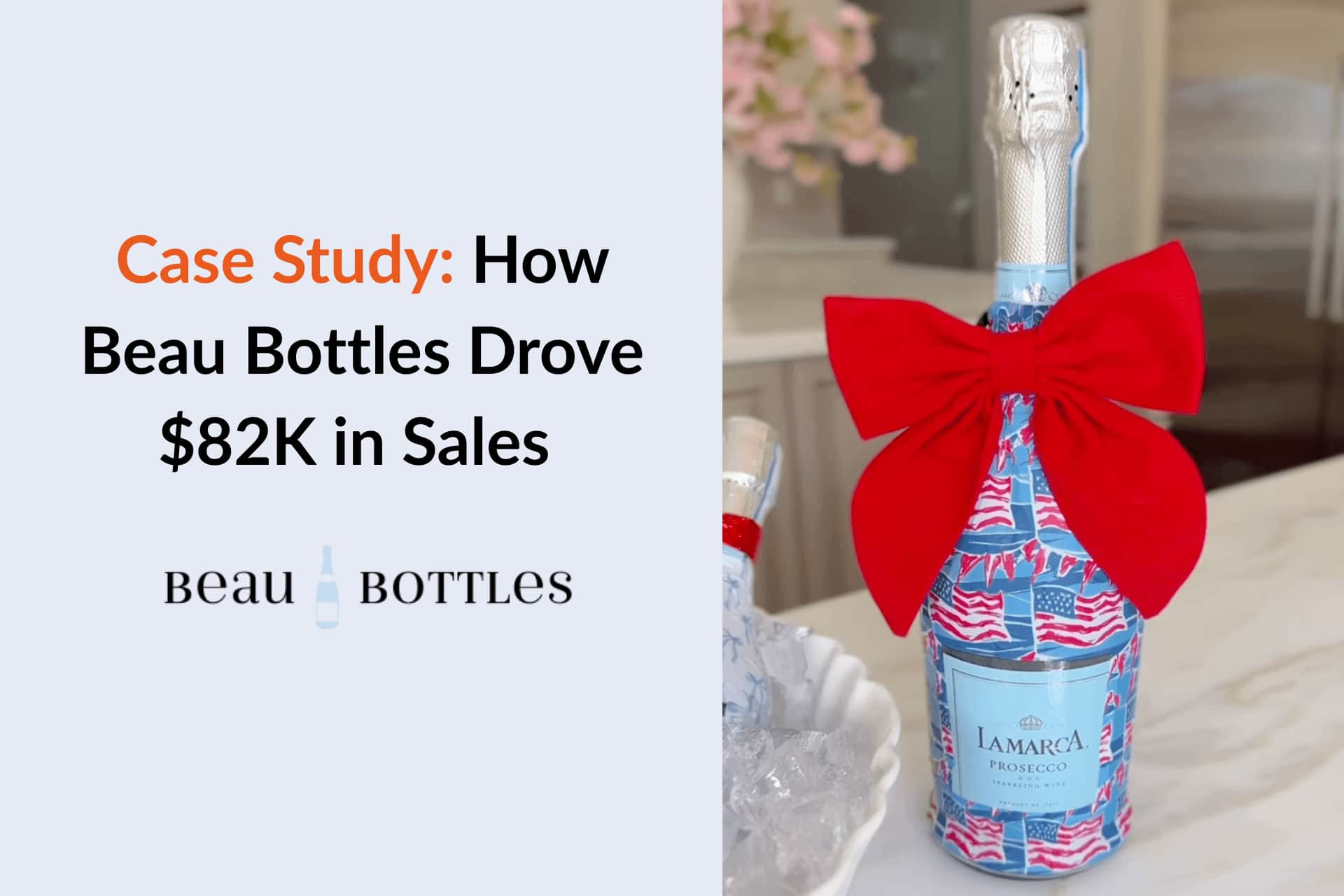





Refersion is popular for affiliate tracking on Shopify and WooCommerce, but many brands seek alternatives due to three recurring pain points: limited creator-relationship tooling beyond basic links and coupons, attribution gaps when journeys span channels or involve cross-device purchases, and pricing that scales up quickly once you add advanced features or higher order volumes.
Whether you're looking for better analytics, a broader influencer database, or enhanced eCommerce integrations, these platforms offer valuable features that can take your marketing campaigns to the next level. Here are the top 10 alternatives we’ll dive into:
When evaluating whether Refersion is the right fit, it’s important to understand why many brands begin searching for alternatives. Based on user feedback from G2 and Reddit, here are four specific challenges marketers frequently mention:
Many users mention that while Refersion handles coupon codes and affiliate links well, it lacks deeper influencer relationship management. There are no built-in discovery tools, influencer CRM features, or automated outreach workflows, which forces brands to use additional software for those critical tasks. This fragmented approach makes scaling creator partnerships difficult and time-consuming.
Another common pain point is attribution accuracy. Marketers highlight that Refersion struggles to track conversions when a customer clicks on an influencer’s TikTok post but later purchases through Instagram or switches devices before completing checkout. These blind spots mean that influencers often don’t get credited properly, which undermines trust and complicates ROI reporting.
Users on forums emphasize that Refersion’s pricing becomes steep once order volumes increase or advanced features are unlocked. Small teams may start affordably, but as campaigns expand, costs ramp up without a corresponding increase in functionality. This makes the platform less sustainable for brands looking for long-term, scalable solutions.
Reviewers also point out restrictions in setting up advanced commission structures. Features like tiered rewards, product-specific payouts, recurring commissions, or bonuses based on customer lifetime value are either unavailable or require heavy manual workarounds. This lack of flexibility is a dealbreaker for performance-driven programs that want to incentivize influencers strategically.
Our comparison focuses on several key aspects:
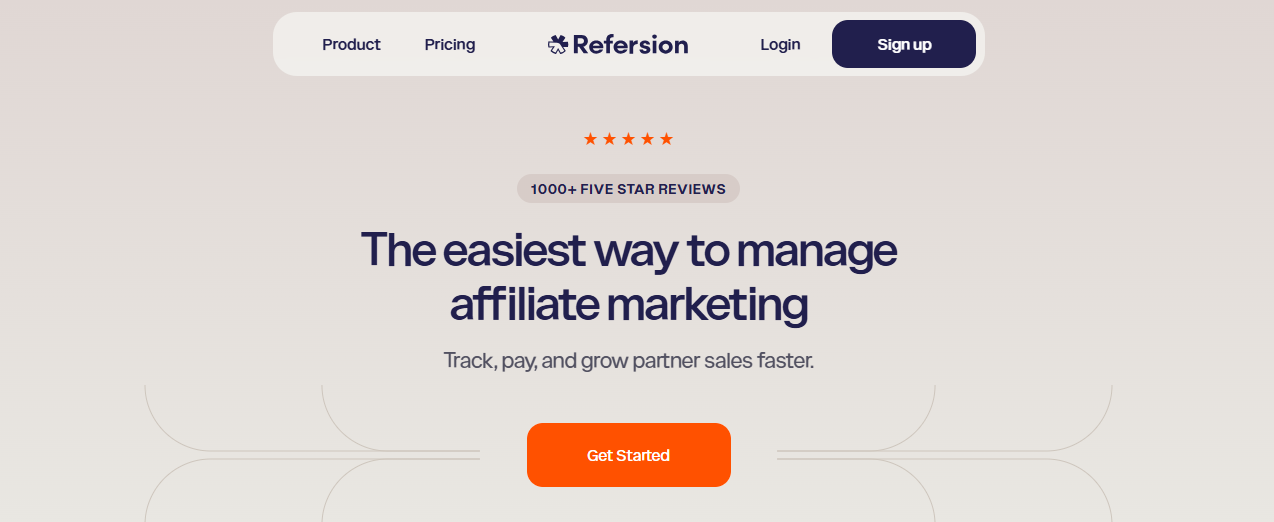
Best For: Refersion is best for eCommerce brands on Shopify, BigCommerce, or WooCommerce looking to run affiliate, referral, and ambassador programs with flexible commission structures and integrated tracking.
Platform Coverage:
Pricing: Based on our research, Refersion offers three different plans:
Reviews: 4.2 / 5.0 (Capterra)
Ease of Use (UX/UI): Most users describe Refersion as easy to set up and intuitive, especially for Shopify stores. Basic program setup and integration are smooth, but there can be a learning curve for advanced features like SKU-level tracking or multiple affiliate types.
Customer Support: Customer support reviews are mixed. Many users appreciate the onboarding, documentation, and chat support in the Growth plan. However, others mention slow response times and less effective help with complex tracking or integration issues.

Best For: Influencer Hero is best for D2C eCommerce brands on Shopify, WooCommerce, Amazon, and custom platforms looking to scale influencer and affiliate campaigns through automation, advanced analytics, and multi-platform support. It’s ideal for teams that want one tool to manage discovery, outreach, CRM, gifting, UGC, and affiliate tracking all in one place.
Platform Coverage:
Pricing: Influencer Hero offers flexible pricing plans to accommodate growing brands. All plans include core features and can scale as the influencer program grows.
Reviews: 5.0 / 5.0 (Capterra)
Ease of Use (UX/UI): Influencer Hero is known for its intuitive design and user-friendly interface. The streamlined dashboard makes campaign setup simple with drag-and-drop workflows, while automated sequences and customizable email templates save teams hours each week. Visual campaign tracking and AI-powered suggestions ensure non-technical teams can get started quickly—most users are up and running in under an hour.
Customer Support: One of Influencer Hero’s strongest areas is customer support. Every plan includes:
Refersion is primarily an affiliate and referral tracking platform, strong in commission flexibility, SKU-level attribution, and eCommerce integrations—especially Shopify. However, it lacks robust influencer discovery, UGC management, and advanced CRM tools, meaning brands often need to combine it with additional software.
Influencer Hero, on the other hand, is a true all-in-one influencer marketing platform. It goes beyond affiliate tracking by including AI-powered influencer discovery, automated outreach, campaign CRM, UGC collection, and customizable storefronts—all under one roof.
Pricing is transparent with flat monthly fees (starting at $649/month) versus Refersion’s lower entry fee ($39/month) but additional transaction-based costs (3% of affiliate sales on the Launch plan).
For brands running large-scale influencer and affiliate campaigns, Influencer Hero often provides a better ROI since it eliminates the need for supplementary tools while offering stronger automation and customer support.
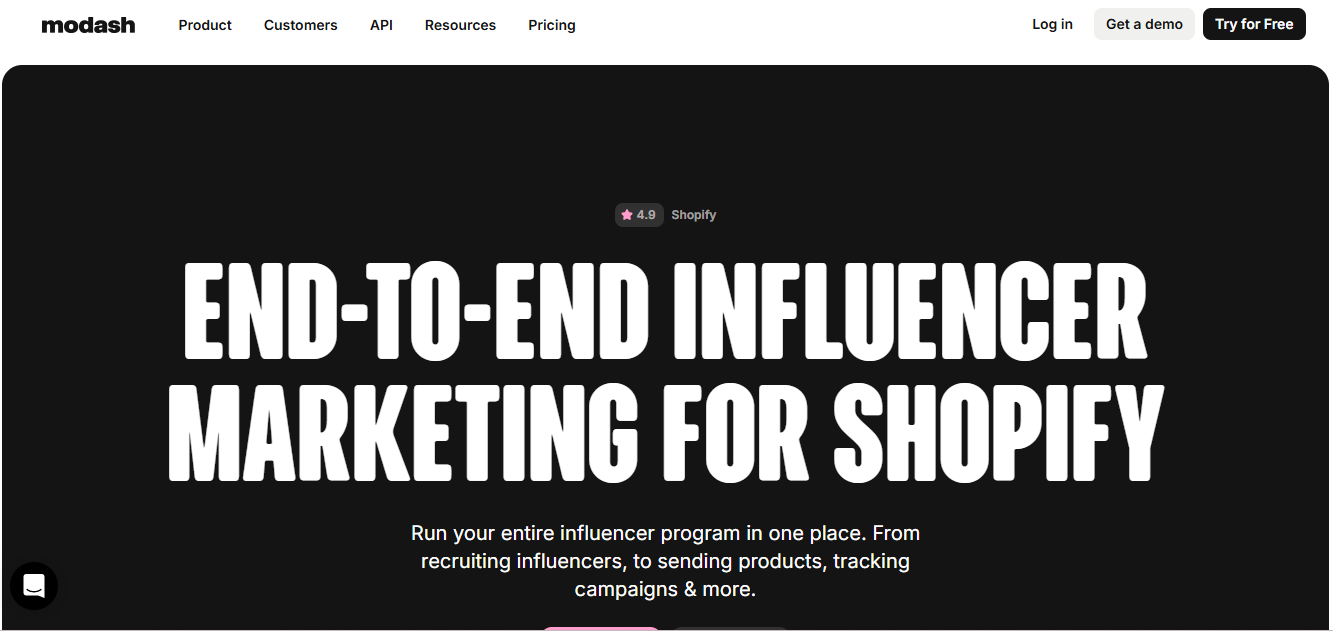
Best For: Modash is best for brands that want a powerful influencer discovery engine and streamlined workflows for outreach, campaign tracking, and affiliate management. It’s especially valuable for eCommerce brands on Shopify looking to scale influencer programs with automation.
Platform Coverage:
Pricing: There are different plans and options.
Reviews: 4.7/5 (G2)
Ease of Use (UX/UI): Users describe Modash as straightforward and clean, with an intuitive search interface that makes it easy to filter through millions of creators. The CRM and campaign tracking dashboards are easy to navigate, though some users mention that handling contracts and UGC rights requires manual work.
Customer Support: Modash earns positive feedback for its responsive onboarding and support team, especially for Performance and Enterprise plans. Users highlight that the dedicated guidance helps them get started quickly, though advanced needs like UGC licensing require manual negotiation and support outside the platform.
Refersion focuses heavily on affiliate tracking, commission structures, and seamless eCommerce integrations with Shopify, WooCommerce, and BigCommerce. It’s best for brands that already know their partners and need strong tracking, attribution, and automated payouts at scale.
By contrast, Modash excels at influencer discovery and outreach, offering access to 350M+ creators, advanced filters, and AI-powered search to find the right fit. It is designed as an end-to-end influencer marketing suite, combining discovery, CRM, campaign tracking, and affiliate automation in one platform.
In terms of pricing, Refersion starts at $39/month (plus 3% of affiliate-driven sales), scaling up to $599/month for enterprise-level needs. Modash starts at $199/month (Essentials) and goes up to $499/month (Performance), with pricing focused on database access, outreach, and campaign management.
Choose Refersion if you want a clean, reliable affiliate/referral management tool with deep Shopify/WooCommerce integrations. Choose Modash if you need powerful influencer discovery, outreach automation, and integrated campaign tracking.

Best For: Upfluence is best for eCommerce brands on Shopify or Amazon that want a complete influencer marketing and affiliate management solution in one platform. With its strong integrations and robust analytics, it’s particularly useful for brands focused on tracking ROI and scaling multi-channel campaigns.
Platform Coverage:
Pricing:
Reviews: 4.5/5 (G2)
Ease of Use (UX/UI): Users mention that Upfluence offers a comprehensive yet intuitive dashboard that centralizes influencer discovery, outreach, tracking, and payments. However, due to the wide scope of features, new users may face a learning curve before fully leveraging all the tools.
Customer Support: Upfluence provides dedicated account managers and onboarding support, which users find helpful for managing complex influencer campaigns. Still, some reviews mention that response times may vary, especially when handling advanced configuration or troubleshooting.
When comparing Refersion vs Upfluence, the biggest difference comes down to focus and pricing. Refersion is primarily an affiliate management solution with a strong emphasis on eCommerce integrations and tracking, starting at much lower entry-level costs, making it ideal for small-to-mid-sized brands seeking straightforward affiliate programs.
Upfluence, on the other hand, is an all-in-one influencer marketing and affiliate platform. It combines influencer discovery, AI-powered outreach, campaign management, affiliate tracking, and payments under one roof. However, it comes at a much higher cost of $1,276/month with annual commitment, making it better suited for established brands with larger budgets.
In short, if you’re looking for an affordable affiliate-first tool with simple influencer collaboration tracking, Refersion is the better fit. If you need a comprehensive influencer marketing suite with robust eCommerce integrations and no commission fees, Upfluence delivers more functionality—though at a premium price point.

Best For: Captiv8 is best for enterprise brands and large organizations seeking a data-heavy influencer marketing solution with advanced campaign tracking and competitive intelligence. It’s particularly suited for companies with bigger budgets that need deep insights, multiple collaboration tools, and storefront/affiliate features at scale.
Platform Coverage:
Pricing: There are different pricing options:
Reviews: 4.1/5 (G2)
Ease of Use (UX/UI): Users describe Captiv8’s interface as feature-rich but not always beginner-friendly. The platform offers a wide range of advanced filters, reporting customization, and collaboration tools, which provide flexibility but also require a learning curve. Teams that prioritize detailed analytics and campaign visibility appreciate its depth, though smaller brands may find the platform overwhelming.
Customer Support: Customer support feedback is mixed. Some users note that onboarding and training sessions help ease adoption, but many reviews highlight slow or unresponsive customer support, especially for technical issues or payment-related problems. This has been a recurring concern among both brands and creators using the platform.
Refersion is an affordable, eCommerce-focused affiliate tracking platform starting at just $39/month, scaling with your sales volume. It’s ideal for small to mid-sized DTC brands that already know their partners and need reliable commission tracking, flexible payout rules, and seamless integrations with platforms like Shopify and WooCommerce.
Captiv8, on the other hand, positions itself as an enterprise solution with a $25K annual contract, a $3K onboarding fee, and optional affiliate + storefront features costing an additional $20–30K/month. Its strengths lie in influencer discovery, campaign collaboration, and competitive intelligence, but the steep pricing and lack of flexible plans make it inaccessible for smaller brands.
In short, brands looking for affordable, scalable affiliate management should choose Refersion, while those with enterprise budgets and a strong need for influencer discovery and advanced analytics might find Captiv8 worth the investment.

Best For: CreatorIQ is best for large brands and enterprises that need an end-to-end influencer marketing platform covering discovery, outreach, campaign management, reporting, and creator payments. It’s especially strong for companies that want reliable real-time data through direct API integrations and strategic support.
Platform Coverage:
Pricing: There are different plans:
Reviews: 4.7/5 (G2)
Ease of Use (UX/UI): Users highlight that the interface is feature-rich but intuitive, with campaign workflows, creator search, and reporting dashboards being easy to navigate. However, because of the platform’s depth, some users note there is a learning curve during onboarding before teams can fully maximize its capabilities.
Customer Support: Customer support is often praised as one of CreatorIQ’s biggest strengths. Brands value the dedicated implementation managers and customer success teams, who provide hands-on onboarding, campaign strategy guidance, and quarterly reviews. Users also mention that the support team is proactive in helping troubleshoot challenges and offering best practices.
Refersion is built primarily for e-commerce brands that want to manage affiliates, ambassadors, and influencers in one place, with strong Shopify, WooCommerce, and BigCommerce integrations. It excels in flexible commission structures, SKU-level tracking, and automated payouts. However, Refersion lacks a robust influencer discovery engine, making it less ideal for brands looking to recruit new creators. Pricing is much more accessible, starting at $39/month plus 3% of sales for smaller brands.
CreatorIQ, on the other hand, is an enterprise-grade solution trusted by brands like Disney, Coca-Cola, and Lululemon. It offers end-to-end capabilities, from discovery with advanced AI filters to real-time analytics, campaign management, content libraries, and in-platform payments. Pricing is significantly higher, often starting around $2,000–$5,000/month on annual contracts, but it comes with dedicated onboarding and strategic support.
In short, choose Refersion if you’re an e-commerce brand focused on affiliate and referral sales at a lower cost, and choose CreatorIQ if you need a global, data-driven enterprise solution with advanced influencer discovery and reporting.

Best For: HypeAuditor is best for brands and agencies that want data-driven influencer discovery and campaign analytics across multiple social media platforms like Instagram, TikTok, YouTube, and Twitch. It’s especially strong for those needing AI-powered audience analysis and competitor benchmarking.
Platform Coverage:
Pricing: HypeAuditor’s pricing is customizable, with the standard “Business” plan starting at around $10,000/year. Pricing can be adjusted based on the number of reports, active campaigns, and platform usage. They also offer a 24–48 hour free trial for new users.
Reviews: 4.6/5 (G2)
Ease of Use (UX/UI): Most users find the platform intuitive, especially for influencer discovery and reporting, thanks to its filtering, dashboards, and automated campaign reports. However, some note that the advanced tools require onboarding or training to maximize their potential.
Customer Support: Users appreciate the dedicated onboarding and account management, with responsive support included in higher-tier plans. That said, smaller clients sometimes feel that support is less personalized unless they are on custom enterprise packages.
Refersion is primarily an affiliate and referral management tool for e-commerce brands, with pricing starting as low as $39/month + 3% of affiliate-driven sales. It’s built for scaling affiliate programs with deep Shopify and WooCommerce integrations, automated payouts, and flexible commission tracking. However, it has limited influencer discovery features, meaning brands often need external tools for sourcing influencers.
HypeAuditor, on the other hand, excels at AI-powered influencer discovery and analytics across multiple social platforms, but comes with a much higher entry price—starting at ~$10,000/year. It’s best for brands and agencies prioritizing influencer discovery, campaign analytics, and competitor benchmarking over affiliate tracking.
In short: Choose Refersion if your priority is affiliate/referral management at an affordable price with strong e-commerce integration. Choose HypeAuditor if your focus is influencer discovery, audience insights, and campaign reporting, and your budget allows for enterprise-level pricing.

Best For: GRIN is best for eCommerce brands and D2C businesses that want an end-to-end influencer marketing solution—from discovery and relationship management to product seeding, content tracking, and performance measurement. It’s particularly strong for brands that prioritize scaling long-term creator relationships over short-term affiliate campaigns.
Platform Coverage:
Pricing:
Reviews: 4.5 / 5.0 (G2)
Ease of Use (UX/UI): Users highlight GRIN’s intuitive and visually clean interface, making it easy to manage influencer campaigns even at scale. The dashboard consolidates communication, content, and reporting into one hub, reducing the need for juggling multiple tools. Some users note that because the platform is so feature-rich, there can be a slight learning curve at the start, but once familiar, it becomes highly efficient.
Customer Support: GRIN is praised for its dedicated customer success managers who provide onboarding and training tailored to each brand’s needs. Many users appreciate the quick response times and hands-on assistance, particularly when setting up integrations or troubleshooting campaign workflows. However, a few reviews mention that response times can vary depending on the complexity of the request.
When comparing Refersion and GRIN, the main difference comes down to affiliate-first vs influencer-first focus. Refersion is more affordable and geared toward brands that need coupon code and affiliate tracking at scale, with strong integrations for Shopify and Amazon sellers. It’s a lightweight choice for brands prioritizing affiliate payouts and performance tracking.
On the other hand, GRIN is a premium, all-in-one influencer marketing platform designed for managing end-to-end influencer relationships, including gifting, content management, and reporting. While pricing is significantly higher, GRIN delivers far more depth in influencer relationship management, content licensing, and eCommerce integrations.
In short: choose Refersion if you’re running affiliate-heavy campaigns and want a budget-friendly solution. Opt for GRIN if you want a complete influencer marketing suite to scale long-term creator partnerships and manage everything in one place.
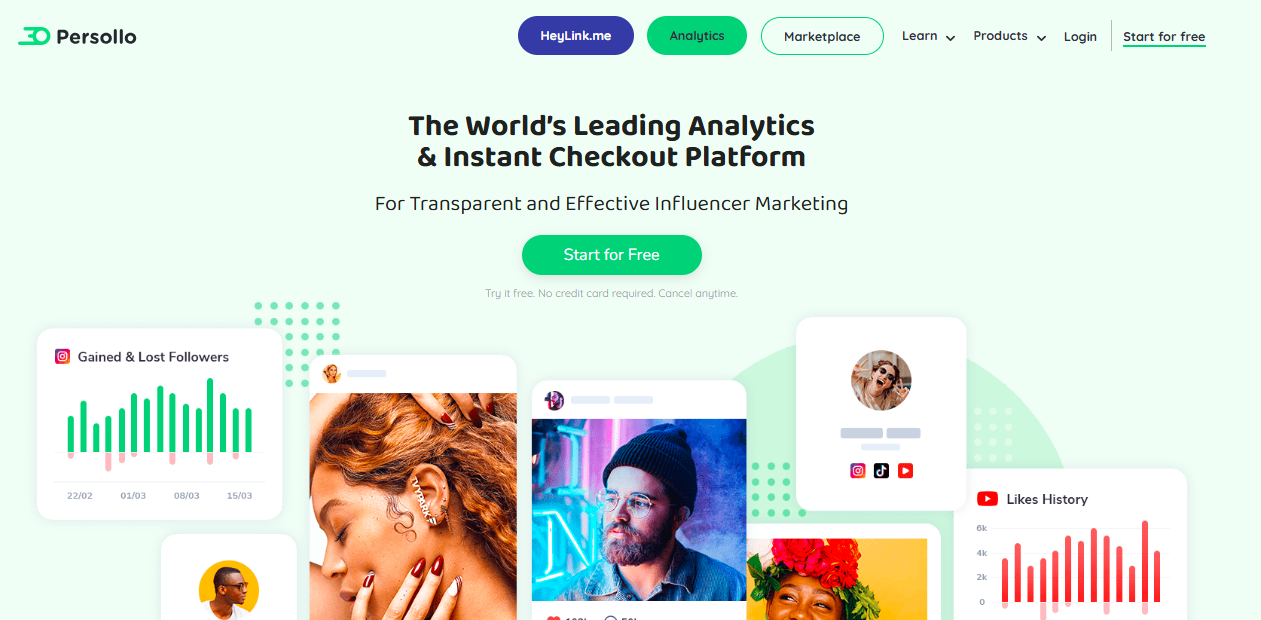
Best For: Persollo is best for brands and creators looking to merge influencer marketing with instant social commerce, particularly in impulse-driven product categories like fashion, beauty, and lifestyle. Its one-click checkout model suits early-stage or budget-conscious users wanting to quickly monetize content without complex e-commerce setups.
Platform Coverage:
Pricing: Based on our research, Persollo offers different plans and options.
Reviews: No verified public reviews available on major platforms such as G2, Capterra, or Trustpilot.
Ease of Use (UX/UI): Users highlight Persollo’s simplicity and fast launch—you can enable instant checkout directly from posts without a heavy setup process. The platform focuses on frictionless user experiences, making it highly accessible even for beginners. However, some users note that feature visibility is limited, especially regarding CRM or advanced influencer tools.
Customer Support: Persollo’s customer support reputation is mixed, mostly due to lack of publicly visible resources like documentation or live support channels. While enterprise and custom plans offer dedicated support, free and smaller-tier users report that support details are unclear or minimal.
Refersion is an affiliate-first platform, excelling in tracking, flexible commission structures, automated payouts, and deep e-commerce integrations (especially Shopify, WooCommerce, and BigCommerce). In contrast, Persollo focuses on instant social commerce, turning influencer posts directly into shoppable links with one-click checkout capabilities.
When it comes to pricing, Refersion follows a subscription model starting at $39/month plus a percentage of affiliate sales, scaling to $599/month for advanced features. Persollo, however, offers a free forever starter plan but monetizes through transaction fees (3.9% + $0.30 per sale) and usage limits, with enterprise plans reaching $950/month.
Brands should choose Refersion if they want robust affiliate tracking, commission management, and store integrations. On the other hand, Persollo is the better fit for brands that prioritize high-conversion social selling, instant checkout from influencer content, and entry-level affordability.
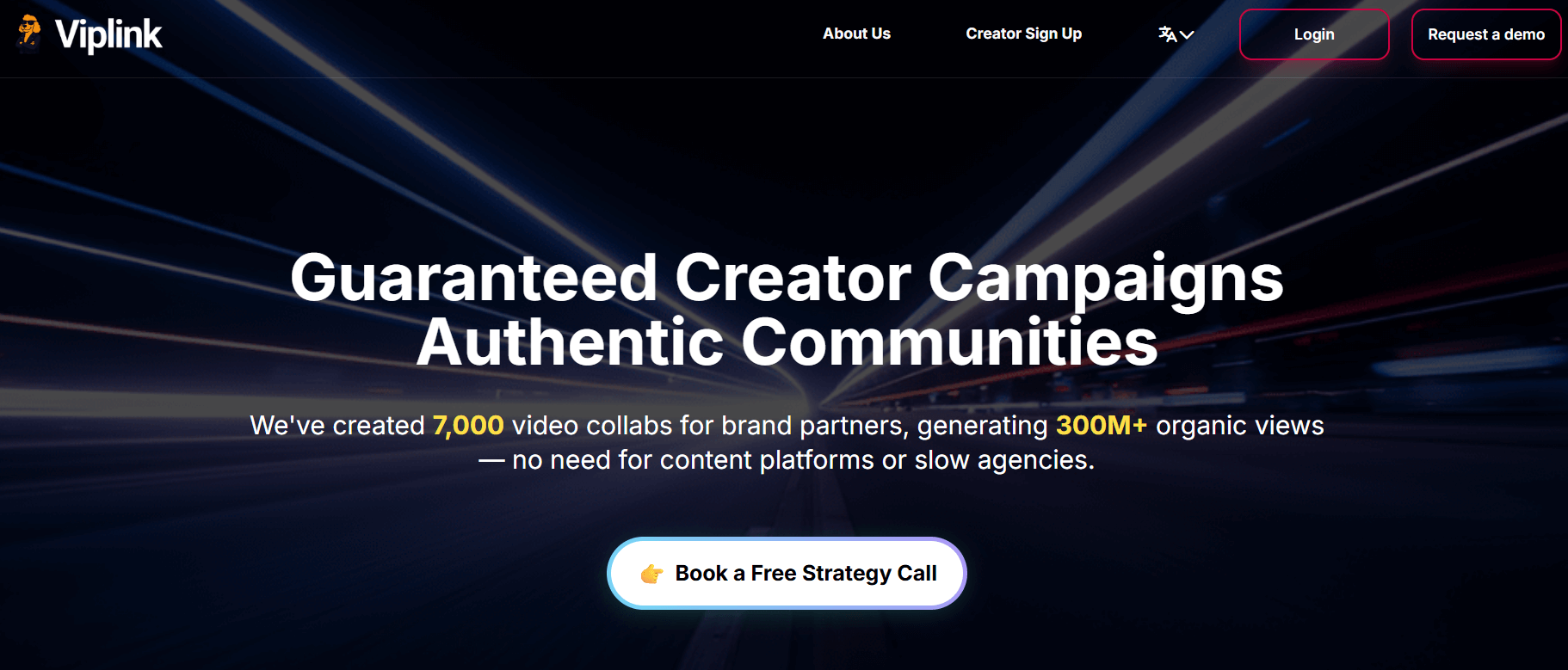
Best For: Viplink AI is best for consumer brands, DTC companies, and marketing teams looking to scale with authentic, high-authority creators and user-generated content (UGC) across TikTok, Instagram, YouTube, and Facebook. The platform is ideal for businesses that want to minimize upfront costs, since you only pay after approving creators and content.
Platform Coverage:
Pricing: No upfront fees; payment is only required once you approve creators and content. However, brands have to pay an additional fee—amount not publicly disclosed—based on what is paid to each creator.
Reviews: 4.4/5.0 (G2)
Ease of Use (UX/UI): Users highlight Viplink AI’s one-click approval flow as one of its strongest points, reducing back-and-forth and allowing brands to stay in control with minimal effort. The dashboards are streamlined, and automated creator management makes running campaigns easier. However, some users note that collaboration features between internal teams and creators feel limited.
Customer Support: Viplink AI provides hands-on support for briefings, timelines, and community activations, allowing brands to be mostly hands-off while still maintaining approval control. Users appreciate the clear communication, though some mention that greater transparency on software updates would improve the experience.
Refersion is primarily an affiliate and ambassador tracking platform built for eCommerce brands, with strong integrations for Shopify, WooCommerce, and BigCommerce. It focuses on commission management, first-party tracking, and payout automation, with pricing starting at $39/month + 3% of affiliate-driven sales.
Viplink AI, on the other hand, is positioned as a UGC and creator-first platform, with no upfront cost—brands only pay once content and creators are approved. Its smart auction system and one-click approval workflow make it ideal for teams seeking streamlined UGC campaigns without committing to recurring monthly fees.
If your goal is to scale structured affiliate/referral programs with strong eCommerce integrations, Refersion is the better choice. But if you want to activate communities through authentic creator content with minimal financial risk, Viplink AI is the more attractive option.
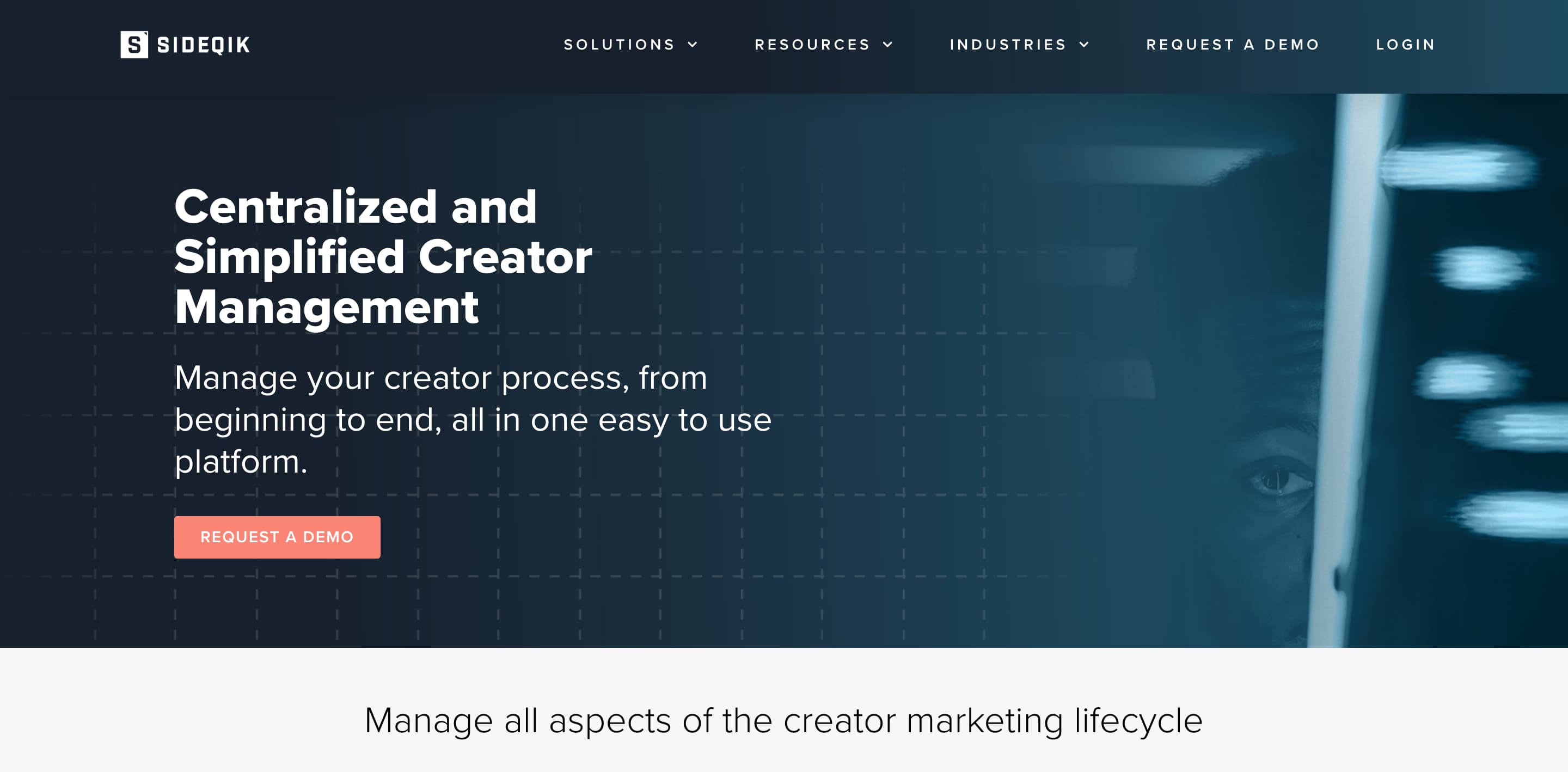
Best For: Sideqik is best for brands running large-scale influencer and ambassador campaigns that want deep social data, advanced analytics, and a strong CRM to manage influencer relationships. It’s especially effective for enterprise brands and agencies needing customizable solutions.
Platform Coverage:
Pricing: Undisclosed.
Reviews: 4.2 / 5.0 (G2)
Ease of Use (UX/UI): Users describe Sideqik as having a robust but complex interface. While it offers powerful analytics and deep insights, new users sometimes feel overwhelmed by the number of features. Once learned, the platform provides comprehensive campaign management with smooth workflows.
Customer Support: Sideqik’s customer support is reported to be responsive and helpful, especially for enterprise clients who benefit from dedicated support. However, smaller teams sometimes note that response times can vary depending on the complexity of their request.
Refersion is a better fit for eCommerce businesses on Shopify, WooCommerce, or Amazon that want a cost-effective way to launch and track affiliate and influencer programs, with pricing starting at just $99/month. It focuses heavily on affiliate tracking, discount code attribution, and integrations with online stores.
Sideqik, on the other hand, is designed for enterprise brands and agencies that need deeper analytics, influencer CRM, and competitive benchmarking tools. Its pricing is significantly higher than Refersion, reflecting its enterprise positioning. While Refersion is best for scaling affiliate-driven sales on a budget, Sideqik is the stronger choice for brands that prioritize influencer relationship management, advanced reporting, and market intelligence.
When evaluating Refersion alternatives, the right choice largely depends on your brand’s goals and budget. Platforms like Upfluence, Sideqik, Captiv8, Modash, HypeAuditor, and CreatorIQ shine with advanced analytics, influencer discovery, and campaign management tools designed for enterprise brands.
On the other hand, solutions like Persollo and Viplink AI bring specialized features for content creators and niche campaigns. For eCommerce-focused businesses, Refersion’s integrations with Shopify and WooCommerce remain valuable, but its limitations in influencer CRM and outreach push many brands to explore more comprehensive alternatives.
Among these options, Influencer Hero stands out as one of the best all-in-one alternatives. Unlike platforms that only cover affiliate tracking or influencer discovery, Influencer Hero provides end-to-end campaign management—covering search, outreach, CRM, content tracking, and automated reporting. This makes it ideal for D2C brands that want to simplify influencer marketing without juggling multiple tools.
If you’re ready to streamline your influencer campaigns and maximize ROI, book a demo with Influencer Hero today and see how it can transform your workflow.

Refersion focuses primarily on affiliate tracking and eCommerce integrations, while alternatives like Influencer Hero, Upfluence, and Sideqik offer full influencer marketing suites including discovery, outreach, CRM, and analytics.
Influencer Hero works well for both. Small and mid-sized D2C brands benefit from its ease of use and automation, while larger brands can scale campaigns with its advanced analytics and CRM.
Refersion starts at $99/month, making it affordable for eCommerce brands. However, alternatives vary widely—some starting at a few hundred dollars, while enterprise-focused platforms like CreatorIQ or Sideqik cost significantly more.
Not directly. Refersion is more about tracking sales through affiliate links and codes. For influencer outreach and relationship management, brands typically use alternatives like Influencer Hero.
A demo gives you a personalized walkthrough of how the platform can streamline your influencer search, outreach, tracking, and reporting. It’s the best way to see how Influencer Hero can fit your brand’s specific goals.



Schedule a Demo with one of our media experts below.